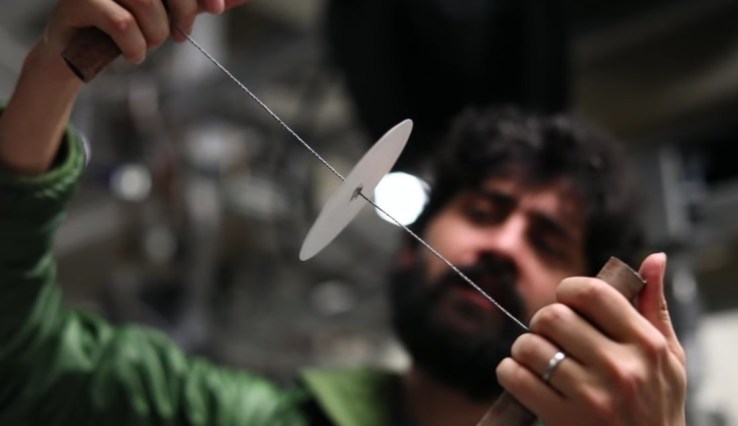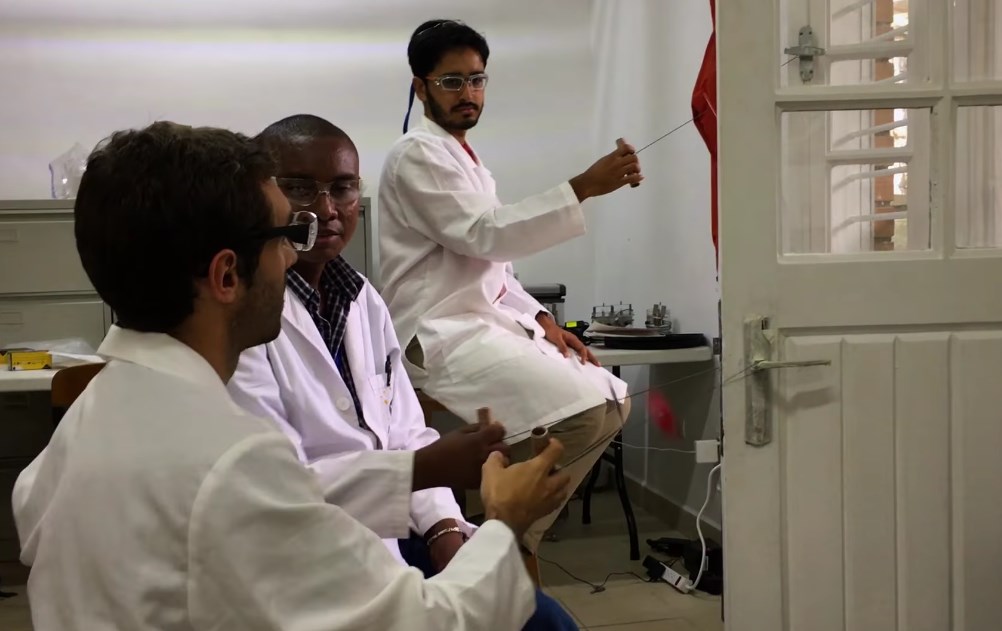
Centrifuges, which separate materials in fluids by spinning them at great speed, are found in medical labs worldwide. But a good one could run you a couple grand and, of course, requires electricity — neither of which are things you’re likely to find in a rural clinic in an impoverished country. Stanford researchers have created an alternative that costs just a few cents and runs without a charge, based on a children’s toy with surprising qualities.
It’s a whirligig, and it’s a simple construction: a small disc, probably a button, through which you thread a piece of string through twice. By pulling on the threads carefully, you can make the button spin quite quickly. You may very well have made one as a child — as Saad Bhamla, one of the creators of what they call the Paperfuge, did.
“This is a toy that I used to play with as a kid,” he says in a video produced by the university. “The puzzle was that I didn’t know how fast it would spin. So I got intrigued and I set this up on a high-speed camera — and I couldn’t believe my eyes.”
The whirligig was spinning at around 10,000 to 15,000 RPMs, right in centrifuge territory. The team then spent some time intensely studying the motion of the whirligig, which turns out to be a fascinatingly efficient way to turn linear motion into rotational motion.
The team then put together a custom whirligig with a disc of paper into which can be slotted a vial with blood or other fluids. By pulling on the strings (they added handles for ease of use) for a minute or two, less than a dollar’s worth of materials does a superb job of replicating the work of a device that costs thousands of times more. They’ve achieved RPMs of 125,000 and 30,000 G-forces.

“There is a value in this whimsical nature of searching for solutions, because it really forces us outside our own sets of constraints about what a product should actually look like,” said Manu Prakash.
They’ve just returned from field tests in Madagascar, where they tested the device and checked in with local caregivers. Up next will be more formal clinical trials of the Paperfuge’s already demonstrated ability to separate malaria parasites from blood for analysis.
If the concept of a simple, cheap alternative to existing lab equipment rings a bell, you might be remembering Foldscope, another project from Prakash. It put a powerful microscope in flatpack form for a few bucks, enabling scientific or medical examination at very low budgets.
The details of the Paperfuge and its development by Bhamla, Prakash and the rest of the team can be found in the most recent issue of Nature Biomedical Engineering.
[Source:- techcrunch]
